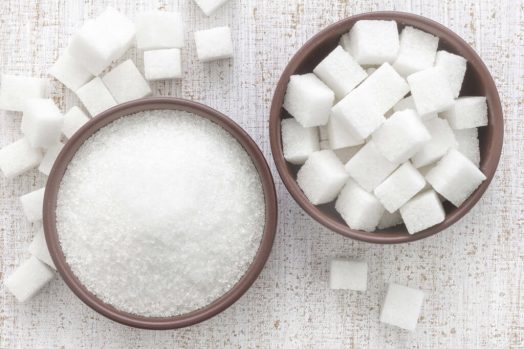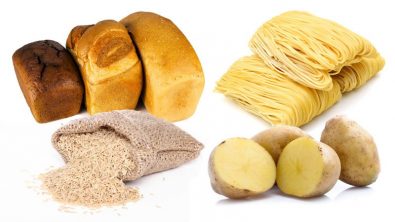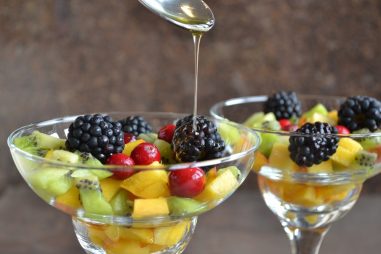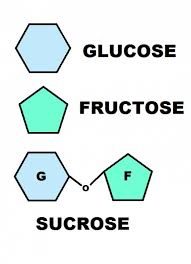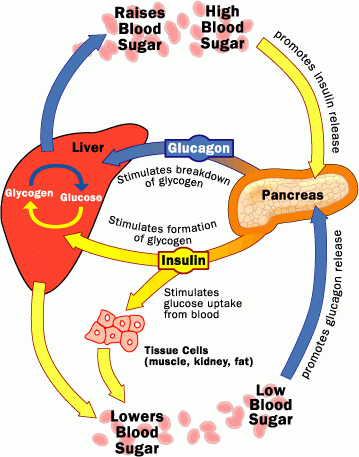It depends.
Sorry for the cop-out answer but sugar affects different people quite differently.
This article will try to give you some insights so that you can better understand how sugar may affect you.
One of the main reasons why it affects people differently is because people have different metabolic health.
What does that mean?
Well, if Alan is a fat person who doesn’t exercise regularly, eats fast food everyday and drinks sweet milk tea or a can of pop with each meal, then Alan’s metabolic health would be poor.
And someone completely opposite, is Peter who has strong muscles, regularly eats fresh produce like fruits and vegetables, meat from naturally-raised sources, and drinks water as the main beverage; he would be someone with good metabolic health. This is over some time of course as one meal doesn’t do that much to alter your body’s basal metabolism.
How sugar gets metabolized (digested and processed by the body) by Alan will be very different than by Peter. To understand why, we need to dive a bit deeper into the chemical make-up of sugar (stay with me – I promise it won’t be that bad!).
Sugar has many forms but the two main types that really are important to talk about are glucose and fructose.
Glucose is the form of sugar that is found in food such as: potatoes, rice, wheat, corn, just to name a few and all their refined forms (rice flour, wheat flour, cornstarch…). In other words, glucose is basically starch. Notice, all these forms of sugar don’t actually taste sweet!
Fructose, on the other hand is very sweet. They are found in: fruit, some root vegetables, honey, agave, maple syrup, and some other foods.
When you combine one glucose molecule with one fructose molecule, you get sucrose which is the chemical name for just white table sugar. When you eat sucrose, the saliva in your mouth cuts the bond and you get glucose and fructose – it’s basically as simple as that.
Table sugar traditionally comes from the sugar cane plant.
Note, that all these forms of sugars come from natural fruits and vegetables and doesn’t mean that they are good or bad. A lot of plants we find in nature can be very bad for you if ingested!
Photo source: https://caloriebee.com/nutrition/Fructose-versus-Sucrose-How-Your-Body-Digests-These-Two-Common-Carbs
Now let’s look at what happens to Peter when he eats these forms of sugars (note: simplified for reading ease).
When Peter eats a bowl of white rice which is primarily made up of glucose, all the organs in his body will metabolize the glucose to use for fuel. Among them is his liver which will store some to be used as a reservoir to regulate his blood sugar levels. When Peter hasn’t eaten for a long time, his blood sugar levels will be low so his liver will release some glucose into the bloodstream so his blood sugar level stays at the right levels. However, Peter’s largest organ is his muscles, so the bulk of the glucose will end up going to the muscles which he will then burn off in his next workout.
So once the rice is eaten, Peter’s digestion will begin to break down the rice into glucose molecules and his blood sugar level will begin to spike up. In response, his pancreas will produce the hormone insulin to capture the glucose and to transport them into the liver, muscles cells, and the rest of his organs. All the cells in his body have insulin receptors which are the doorways for the glucose to get inside the cells; and the insulin carrying the glucose holds the keys to open them.
Photo source: https://sites.google.com/site/isshomeostasis/Home/blood-sugar
This is what happens when someone who is fit and healthy eats a bowl of rice.
Now let’s look at what happens when someone who is not metabolically healthy eats the same bowl of rice.
Alan doesn’t exercise much, so he will not have much muscle mass. He’s been eating fast/junk food which is typically very high in sugar and bad fats, so his body is already full of glucose and likely very inflamed. When he ingests the rice, the body first goes through the same process as Peter – the pancreas secretes insulin to capture all the glucose that’s flooding into the bloodstream from digestion. But unlike Peter, Alan’s liver (and other organs) is already full of glycogen (stored glucose), and his limited muscle mass is also full of glucose; so there really isn’t any place to go for the insulin to take the glucose. But there is one place left – the last resort.
Fat cells.
When the body is full of glucose and never gets used up, the body converts the sugar to fat molecules which can then be packaged together and stored for a rainy day in fat cells. This is called de novo lipogenesis.
In other words, SUGAR ==> FAT.
Fat cells can expand to accommodate more. This is why obese people can keep growing in size to very alarming levels!
Credit: David Creffield / Rex Features
Therefore, someone who is not metabolically healthy, eating too much starchy foods can actually result in fat production.
If Alan’s case is chronic (going on for a long time), then all the insulin receptors in his muscles, organs and fat become insulin resistant. This means that the cells are no longer accepting insulin so no glucose can get in anymore.
Why does this happen?
Because when you have more glucose than the body needs, it gets messy. The excess glucose will bind to amino acids nearby and cause AGEs which is another form of oxidative stress to the body. This is why your body has a fail-safe mechanism for shunting the excess glucose to be converted to fat and saves your body from clogging up and failing.
This fail-safe is not a long-term solution, however, as this state of insulin resistance is actually a disease, and it has the name type 2 diabetes.
Type 2 diabetes is your body not knowing how to use glucose for fuel anymore as the cells in your body have shut down all the insulin receptors and eventually starve at the cellular level. This can lead to blindness, amputated limbs, cardiovascular disease and even death.
Hopefully, you now see how sugar – more specifically, glucose can have such vastly different effects on people.
I invite you now to take a look at your current lifestyle and see how eating starchy foods may affect you.
Please leave a comment below if you have any questions or would like to discuss more about insulin resistance. As always, Olive Branch is here to help you come up with a healthy meal plan and demonstrate proper exercise that can be a part of your winning strategy!
Next week’s blog, we’ll go into how Peter and Alan metabolize fructose!
References:
- McGuff, D. (2009), Body by science: a research -based program for strength training, body building, and complete fitness in 12 minutes a week, J. R. Little (Ed.), United States of America: McGraw-Hill.
- Lustig, R. (2013), Fat Chance, London: Fourth Estate.
- https://academic.oup.com/ajcn/article/76/5/911/4689540
- https://www.endocrineweb.com/conditions/diabetes/normal-regulation-blood-glucose
- https://www.ncbi.nlm.nih.gov/pmc/articles/PMC6735759/
